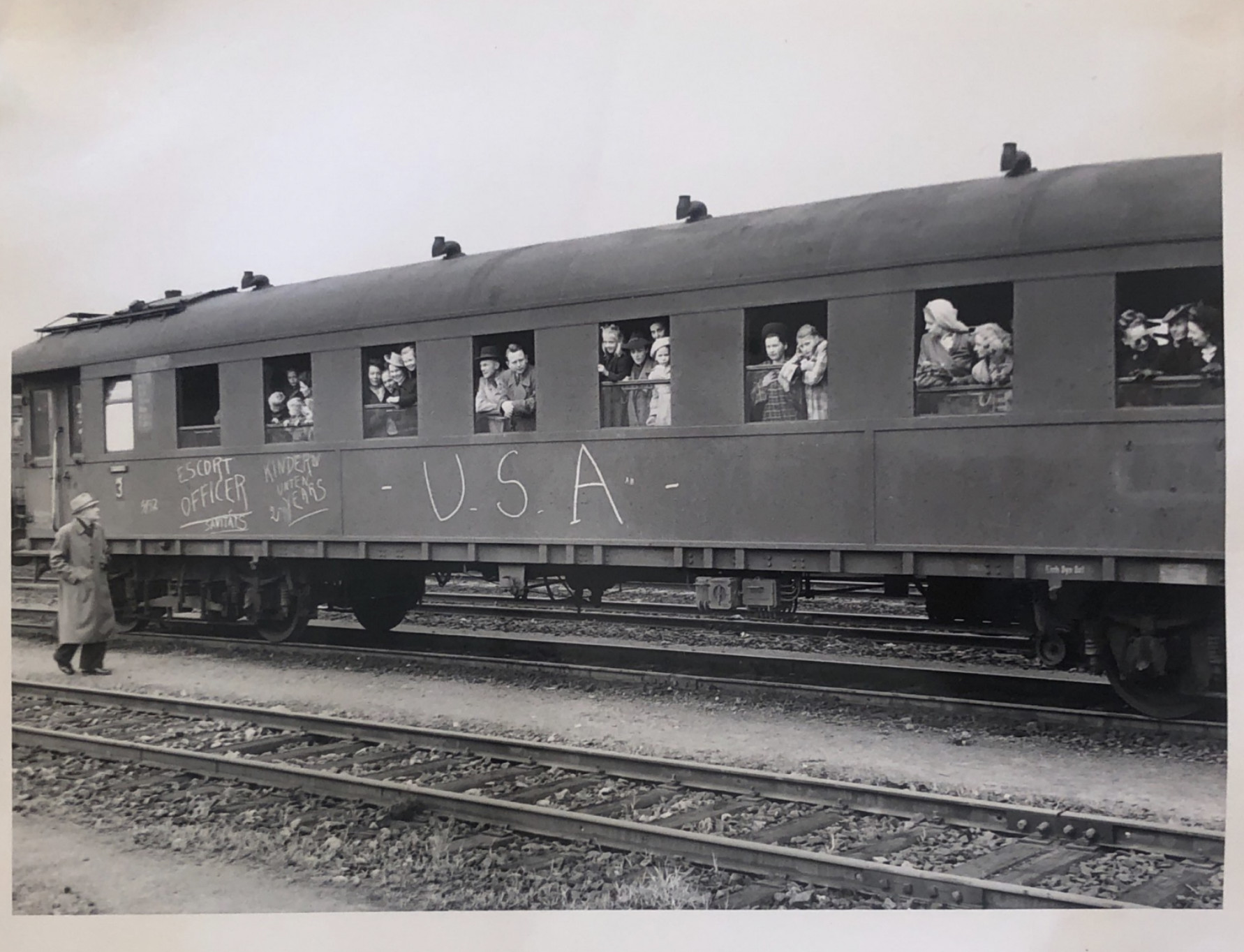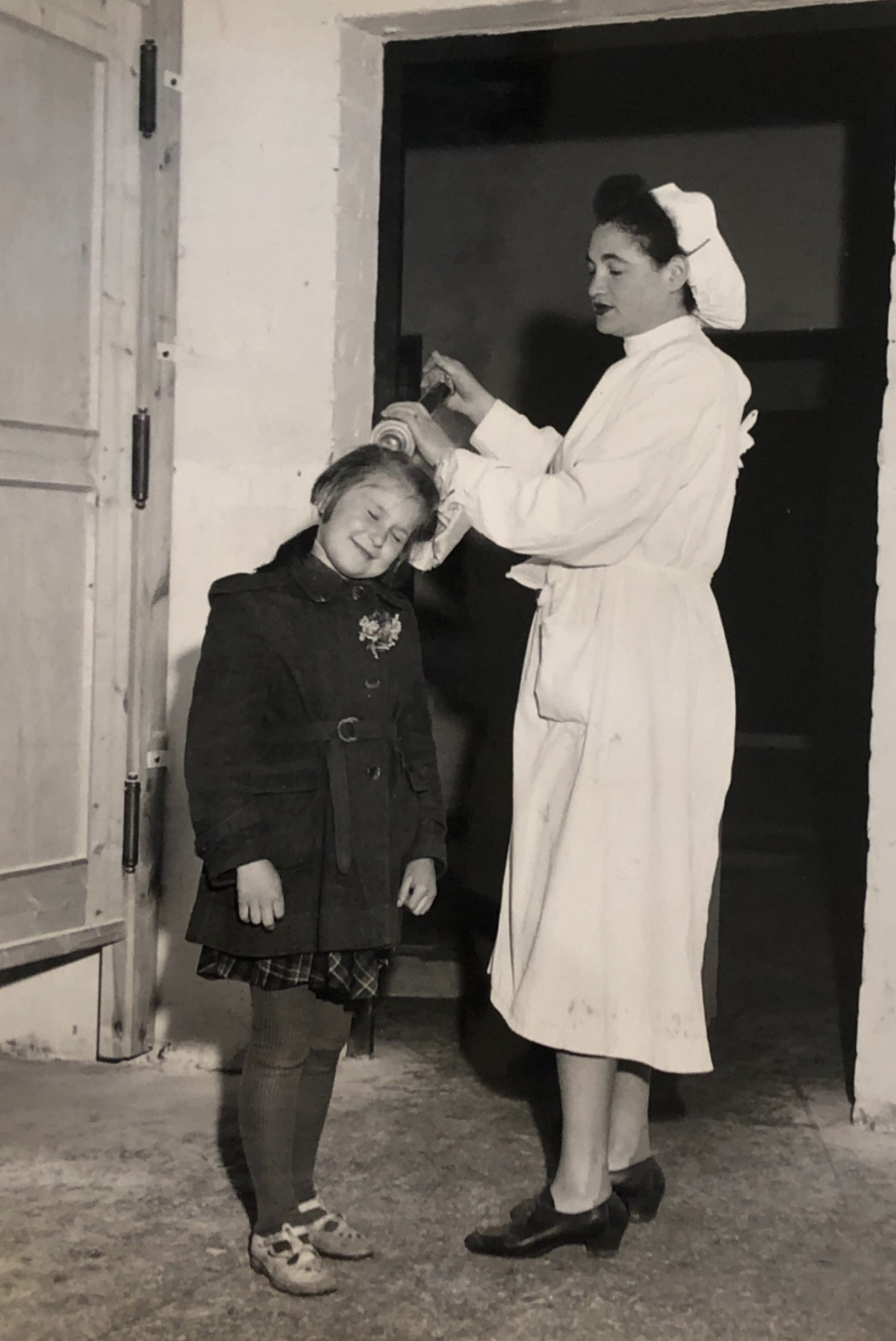IRO & UNRRA
United Nations Relief and Rehabilitation Administration (UNRRA)
United Nations Relief and Rehabilitation Administration or UNRRA was an international relief agency established by the United Nations that focused on displaced persons after WWII. It was the first relief agency that established camps and provided basic needs for the DPs.
UNRRA cooperated with the Allied Forces in Germany and established assembly centers and displaced persons camps. A majority of its operations were focused on the repatriation of the DPs. The repatriation was considered successful as it repatriated around 7 million DPs, leaving the “last million” in camps. However, the repatriation did receive criticism for being too forcible and irresponsible in pushing people back.1
As the DP issues started to ease and the funding ran out, UNRRA gradually transferred its responsibilities to the newly established International Refugee Organization, specifically the Preparatory Board in late 1940s.
“The United Nations have recognized that first things must come first, and that relief and rehabilitation are among these first things...[UNRRA] is designed to plan, coordinate, administer or arrange for the administration of measures of relief for victims of war and to facilitate such rehabilitation as is necessary to the adequate provision of relief.”1
Herbert H. Lehman, Director General of the UNRRA Administration
If you are interested in UNRRA and its history, please read the book To Enable The United States To Participate In The Work Of The UNRRA“, published by House of Representatives, Committee on Foreign Affairs. Another primary source recommended is a historical document, Reports to Congress on Operations of UNRRA, by the United States President and UNRRA.
UNRRA Cooperating with the Voluntary Agencies
The military signed an agreement with UNRRA that granted UNRRA the right to operate in the Allied Zones and to supervise voluntary agencies (VAs), such as LWF.
The result was that all VAs had to be recognized by UNRRA to enter. And not all were granted that, due to UN policies. For instance, UNRRA rejected the UUARC and United Lithuanian Relief due to recognition issues.2
During its operations, UNRRA had trouble with keeping its commitments due to lack of personnel, transportation, and mail services. The cooperation with the voluntary agencies was rough as both sides lacked understanding for each other. The VAs thought UNRRA was not efficient in granting recognition to enter Germany and complained of the heavy paperwork required while UNRRA claimed that the VAs lack information of the actual scene of what is going on.
*If you are interested in reading more about the UNRRA DP Registration, you can visit the Arolsen Archive.
International Refugee Organization (IRO)
On June 30, 1947, UNRRA and Intergovernmental Committee on Refugees terminated and transferred to IRO.3
IRO’s responsibilities included managing the DP camps, cooperating with the voluntary agencies (VAs), and searching for permanent resettlement of refugees.
Fortunately, the transfer from UNRRA to IRO was smooth. However, initially, like all the agencies, IRO lacked funding, meaning that sometimes they could only provide supplementary aids.
Nevertheless, as more than half of the staffings in the IRO were British, it was suspected that there was a tendency of political bias in treating the Jews.
UNNRA vs IRO
IRO inherited an organizational machinery which UNRRA constructed. It was more concentrated on DP camps and resettlement, without having to worry about repatriation. IRO also had fewer displaced persons they worked with as so many were repatriated. Also, the timing was fortunate as more countries were open to DP resettlement.

American Council of Voluntary Agencies for Foreign Service (ACVAFS)
ACVAFS provided means of consultation, coordination, and planning for relief and reconstruction programs abroad. It initiated intensive activities to ensure VA’s rights to IRO, while, at the same time, they urged IRO to review VAs’ agreements’ with UNRRA. ACVAFS also sent people to Germany in Feb. 1947 to learn about the situation.
Needs of Displaced Persons
Primary Assistance
To Displaced Persons:
IRO provided displaced persons with:
- basic care (including health checks) and maintenance
- legal and political protection
- possibility of repatriation
- aid in finding opportunities for resettlement to other countries.
To Lutheran World Federation Service to Refugees (LWF-SR)
IRO provided free travel warrants for train travel to all “International Personnel,” which many LWF-SR officers were considered, through the occupational authorities. In Oct. 1950, 35 passenger vehicles were in use by LWF-SR, but IRO also provided five trucks for major supply movements. IRO also provided about 60% of the gasoline used by all LWF vehicles in Germany.4
Examples of how IRO was engaged in daily camp life during IRO operations:
Resettlement: If the LWF wanted to resettle a DP in the U.S., the LWF would have to interview the DP and create a dossier. As soon as a DP is matched for a sponsor, the dossier will be sent to the DP Commission as well as the IRO subarea offices. The DP would have to go through health checks issued by the IRO. The IRO would then validate the dossiers. IRO also organized the ships to the U.S.
Travel: Another example could be that when a pastor travelled between camps to conduct service for DPs at other camps, they needed the travel warrants provided by the IRO and some support in transportation.
Endnotes
- Haim Genizi, “7. The Displaced Persons Commission and the Resettlement of MPs,” chapter, in America’s Fair Share: The Admission and Resettlement of Displaced Persons, 1945-1952 (Detroit, MI: Wayne State University Press, 1994).
- United Nations Relief and Rehabilitation Administration and United States President., “Report to Congress on United States Participation in Operations of UNRRA.,” 1944, 19.
- United Nations Relief and Rehabilitation Administration and United States President., “Report to Congress on United States Participation in Operations of UNRRA.,”
- Kenneth C. Senft, “The Lutheran World Federation and the Displaced Person” (PhD diss., Lutheran Theological Seminary, 1952), found in Kierkegaard Library Rare Books Room.
Another resource that aided in this research: Hauge, Osborn. Lutherans Working Together: A History of the National Lutheran Council, 1918-1943. New York: National Lutheran council, 1945.
Check out more of the sources that contributed to this page by clicking on the button below.
Photo Credits
From top to bottom, left to right:*
1. (Heading) Family sitting around desk, Lutheran World Federation Service to Refugees 1947-1949 Photographic Section, used with permission of the Lutheran World Federation and Evangelical Lutheran Church in America.
2. Allied Expeditionary Force (June 1944), Ernest Witte Box 15, Social Welfare History Archives, Elmer L. Andersen Library, University of Minnesota.
3. Group of people sticking their heads out from a train, Lutheran World Federation Photographic Section, used with permission of the Lutheran World Federation and Evangelical Lutheran Church in America.
4.Xiaoyang Hu, “Displaced Person Relief in Germany: As a Displaced Person, I have to think about…”
5. Front page of an agreement signed between the IRO and WCC and LWF. LWF Geneva Archive, used with permission of the Lutheran World Federation and Evangelical Lutheran Church in America.
6. Young girl receiving dusting from IRO nurse, Lutheran World Federation Photographic Section, used with permission of the Lutheran World Federation and Evangelical Lutheran Church in America.
*Description ordering is based on computer view. If viewing this page on a smartphone or tablet, please check the descriptions provided as the ordering may be distorted.


